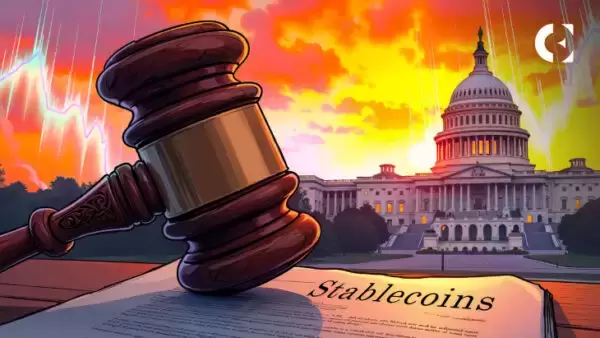 |
|
 |
|
 |
|
 |
|
 |
|
 |
|
 |
|
 |
|
 |
|
 |
|
 |
|
 |
|
 |
|
 |
|
 |
|
加密貨幣新聞文章
Ether (ETH) Market Review for 2024: A Resurgence Driven by Market Optimism Over Pro-Crypto Policies
2025/01/07 23:24

After trailing behind its cryptocurrency peers for most of 2024, ether joined the rally sparked by bitcoin’s record-breaking climb, crossing the $4,000 mark in December – still well below its all time high of $4,900.
Ether gained around 53% in 2024 compared to bitcoin’s 113% surge. However, ether's recent performance showed promise. Since the U.S. election result, ether increased 39%, outperforming bitcoin's 35% gain, signaling a potential resurgence driven by market optimism over president-elect Donald Trump’s anticipated pro-crypto policies.
Other key factors driving this optimism included robust staking dynamics, steady transaction fees and growing institutional interest, particularly through ETFs.
Ether futures saw muted volume at the beginning of the year, but CME ether futures became the go-to product for risk management as spot ether ETFs began trading mid-year and volatility returned to the market toward year-end. Nearly 12 million contracts representing a total value of $256 billion traded between ether and micro ether futures in 2024. Thirty-nine percent of notional volume traded was in Q4 2024 as the crypto markets reacted to the U.S. election results, signaling a buoyant sentiment.
Large open interest holders (designated by the CFTC as entities holding 25 or more contracts) reached new weekly records throughout December, indicating growing client interest in regulated solutions to manage ether risk.
The ETH-BTC ratio, which measures ether’s performance relative to bitcoin and shows the number of bitcoin needed to buy one ether, reached its lowest level since launch on Nov. 20 of 0.032857, which may be its bottom as we see improved regulatory outlook and an increase in institutional adoption.
1. Ether ETFs outperform bitcoin ETFs
U.S. spot ETH ETFs have received a cumulative $577 million in net inflows since their July 2024 launch, an overall success among the broad ETF universe. Between November 25 and November 29, spot ether ETFs even surpassed the daily inflows of bitcoin ETFs, with ether ETFs experiencing a net inflow of $467 million (including net inflows of $428 million in a single day), marking a shift in investor sentiment.
The approval of both bitcoin and ether ETFs represents a major milestone in the mainstream adoption of digital assets. Looking ahead, the interest of institutional investors could rise even further if regulatory approval allows asset managers to incorporate Ethereum staking yields into ETFs.
2. Alt Season
After months of ether underperforming bitcoin, traders may now see the ETH/BTC ratio’s lower level as an opportunity with a potential gradual rotation from BTC to ETH and other alt coins.
Typically, bitcoin leads the rally, then consolidates as ether and other alt coins catch up. This has been true this cycle where bitcoin’s dominance dropped from 61.7% in October to 57.4% in November and to 56.5% in December, suggesting that altcoins may have begun gaining momentum for a potential alt season.
3. Staking yields
Ether investors can generate extra returns on top of their holdings by staking or locking their coins in the network in return for rewards. As of the time of writing, 28% of ether’s supply is locked in staking contracts with the annualized reward rate averaging 3%. Under a new administration, together with anticipated Federal Reserve interest rate cuts and continued upgrades to the blockchain, there could be an uptick in ETH’s staking yield.
4. DeFi, smart contracts, DAPPS and NFTs
Ethereum's value proposition extends beyond being a digital currency, as it remains the dominant blockchain for building decentralized finance (DeFi) applications (DAPPS), smart contract platforms, NFT (non-fungible token) tokenized assets and Web3 applications.
The total value locked (TVL) in Ethereum-based DeFi projects has grown over the past few weeks, reaching $69.4 billion, according to DefiLlama. The surge suggests rising confidence in Ethereum as a platform for financial innovation.
5. Ether upgrades
On March 24, Ethereum implemented the Dencun upgrade, which reduced transaction costs for Layer 2’s and increased the Transactions per Second (TPS) at which they could post to the Layer 1. The adoption of Layer 2’s has shifted noticeably over the last year.
In addition, the Pectra upgrade, expected in Q1 2025, is one of the largest hard forks ever in terms of the Ethereum Improvement Proposal (EIP) count. It aims to improve protocol efficiency, enhance the user experience and expand data capacity, as well as pave the way for future scalability enhancements.
Conclusion
All eyes are on what the Trump administration will bring and the implications for the entire crypto market. The
免責聲明:info@kdj.com
所提供的資訊並非交易建議。 kDJ.com對任何基於本文提供的資訊進行的投資不承擔任何責任。加密貨幣波動性較大,建議您充分研究後謹慎投資!
如果您認為本網站使用的內容侵犯了您的版權,請立即聯絡我們(info@kdj.com),我們將及時刪除。
-

-

- 隨著鯨魚的積累,比特幣(BTC)所有權動態變化,較小的持有人卸載
- 2025-04-03 10:20:12
- 來自加密分析公司玻璃節的數據揭示了比特幣(BTC)所有權動態的重大變化。
-

-

- 中國在其東北發現大量的1,000噸金押金
- 2025-04-03 10:15:21
- 地質學家宣佈在中國東北地區發現了大量1,000噸金礦床。
-

-

-

-

- 以太坊(ETH)再次處於眾人矚目的焦點,因為技術指標表明了可能的周轉方式。
- 2025-04-03 10:05:13
- ETH目前為1900美元,分析師表明,如果資產可以收回最重要的阻力水平,則可能會出現牛市。
-






























































